 Today was the second day of the 2006 Catfish Convention. I was able to attend most of the sessions today, and I must say that all were of very high quality. Tomorrow, the convention will wrap up with an all-day auction.
Today was the second day of the 2006 Catfish Convention. I was able to attend most of the sessions today, and I must say that all were of very high quality. Tomorrow, the convention will wrap up with an all-day auction.
The first session of the day was about African catfish, and was presented by Mark Soberman. Mark gave a brief overview of the 9 families of catfish native to the contient. A few highlights included Austraglanidae, who are an endangered species in South Africa. Of course, he had to mention the Claridae family of catfishes, who are an air-breathing group of catfishes that are now banned in the U.S. after a series of incidents related to Snakeheads. Don’t forget the Malapteruidae, who include a few electric catfish, and the Mochakiadae, who are Africa’s largest family of catfish.

Really, all of these were just leading up to Mark’s favorite group of African catfish, the Synodontus. Synodontis catfsh include many of the fish we are familar with in our LFS’s, such as the upside-down catfish. He describe a number of fishes, but also lamented a little bit, at the current influx of Synodontis hybrid fishes coming out of Singapore fisheries. Mark feels that African catfish species are unique enough in their own right, that the hybridization only confuses hobbiests.
Inbetween sessions, I decided to take a trip down the hall to the Fish Showroom.  This room have about 200 tanks in it, stocked full of conference attendee’s best fish from their fishrooms. There were more than just catfish represented in this rooms; there were: catfish, killies, bettas, cichlids, livebearers, danios, pretty much any class of fish you can think of.
This room have about 200 tanks in it, stocked full of conference attendee’s best fish from their fishrooms. There were more than just catfish represented in this rooms; there were: catfish, killies, bettas, cichlids, livebearers, danios, pretty much any class of fish you can think of.
After purusing the fish, and admiring more than a handful of beautiful specimens, I headed back to the lecture hall for Ian Fuller’s second talk of the conference about Breeding Corydoras.

Ian covered all aspects of his breeding techniques for Corys. He recommends the following:
– buy fish already at breeding age.
– know how to seperate males from females. For example, males often have an elongated ventral fin. Females usually have broader bodies. Males are usually the more colorful fish.
– Use smaller tanks, such as 10-20 gallons.
– Use RO water, adjusting it to 6.5-7.0 PH, GH 0-3 degrees, mix in 1 part Epson salt, 1 part Marine Salt, and 2 parts chalk.
– Use fine grained salt/gravel. Do NOT use a bare-bottom tank because it’s bad for the Cory’s barbles.
– Setup the tanks with oak leaves, beech twigs, java fern/moss, etc.
– Feed a variety of foods. Brine shrimp, microworms, earth worms, and Tetra tabs are especially good.
– Trigger spawning by doing massive water changes, temperature changes, PH crashes, etc.
– When you see eggs, add Alder cones to the water as a mild anti-fungal treatment. Move the eggs to a hatching container with Java moss.
 The last session I attended today was by Dr. Peter Unmack about Austrailian catfishes. I think that Dr. Unmack might have had the most interesting talk of the day, largely because it featured catfish that I had never seen before.
The last session I attended today was by Dr. Peter Unmack about Austrailian catfishes. I think that Dr. Unmack might have had the most interesting talk of the day, largely because it featured catfish that I had never seen before.

There are only two families of catfish in Austrailia. Many of the species in these families actually spend a portion of their life in saltwater. Many are mouthbrooders (pictured right). Unfortunately, there aren’t many Austrailian catfish that are suitable for aquaria. Furthermore, the ones that are, rarely are seen because their natural habitats are too remote to easily collect and ship. This is a shame because most of these catfish would be relatively easy to keep. For example, they can tolerate a wide range of PH swings because in nature, when streams flood, the solids are diluted, causing the PH to drop. But, when the water recedes, the PH skyrockets. The catfish don’t care. Infact, this fluxation might trigger spawning.
The Plutosidae family is a really interesting family of catfishes. The look like someone took a South American catfish’s head, and put it on the body of a knifefish, or eel.

One of the most widely distributed fishes from this family is the Neosilurus hyrtlii (left). As you can see, they don’t have distinct caudral or dorsal fins. Peter also described the Neosiluroides cooperensis, which he thinks is one of the most bizarre catfish in Austrailia. This fish is found in Cooper Creek, has unusually good eyesight, and is an adept predator of other fish and shrimp. They lay huge eggs, and are rarely caught under 6″ in size. In his experience, it will kill anything it see’s.
Peter wrapped up his talk with a slideshow of other Austrailian fish, including rainbowfish and gobies.
After this session, I decided that I couldn’t risk not buying a few fish/crayfish that were on sale out of one of the hotel rooms, so I promptly bought more than I needed, and headed home to put my new fish in their tanks.
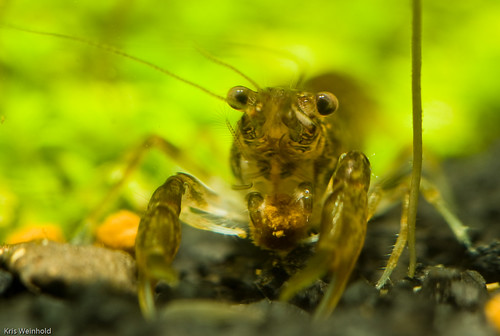


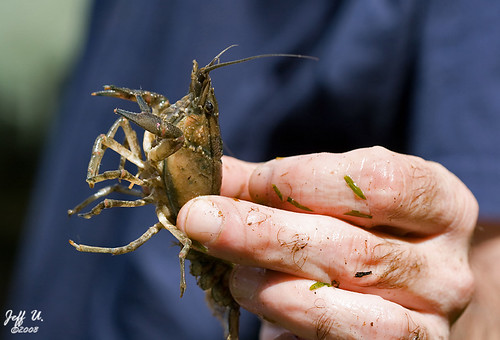

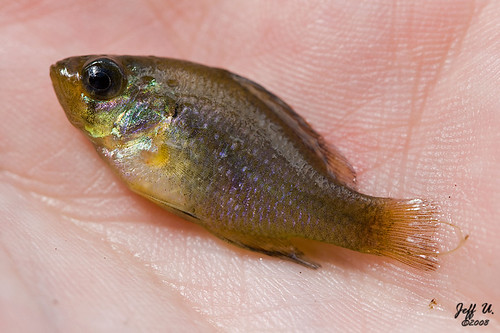

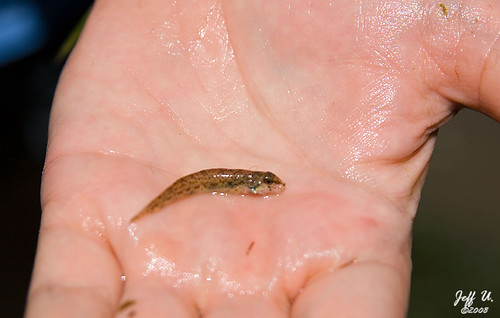
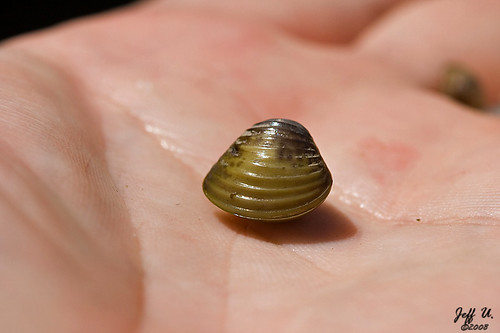
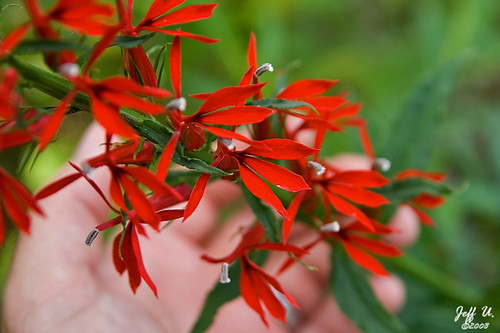




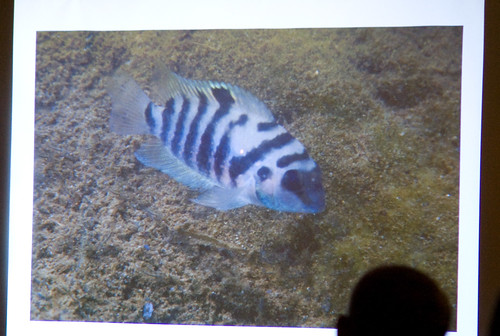
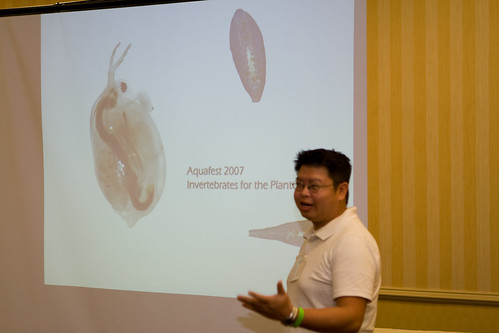
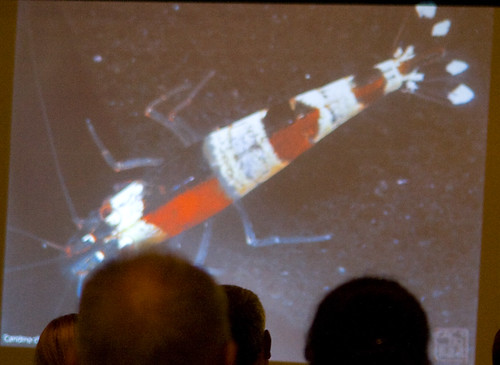
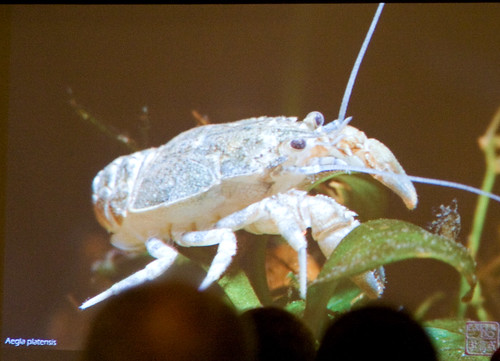
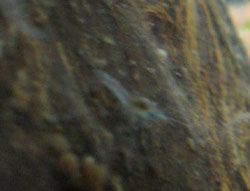
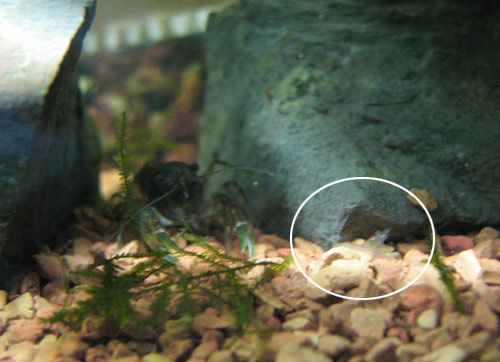
 After many months of waiting, the 2006 Aquatic Gardeners’ Association Conference is underway after president, Erik Olson, welcomed all attendees. He introduced many of the speakers for the weekend conference, and asked several local clubs to come up to the podium to speak about their activities. There was a brief, unexpected intermission, when one of the folks, who will rename unnamed, fainted at the podium, and needed some time to readjust themselves to their surroundings.
After many months of waiting, the 2006 Aquatic Gardeners’ Association Conference is underway after president, Erik Olson, welcomed all attendees. He introduced many of the speakers for the weekend conference, and asked several local clubs to come up to the podium to speak about their activities. There was a brief, unexpected intermission, when one of the folks, who will rename unnamed, fainted at the podium, and needed some time to readjust themselves to their surroundings. Eric Do gave the opening presentation about invertebrates. Eric is from the host club, the San Francisco Bay Area Aquatic Plant Society, and gave an excellent presentation with many very professional-like macro photos of shrimp, snails, crayfish, and even triops. He described how he uses the “drip-method” to acclimate all of his new arrivals, and recommended feeding them a number of prepared foods, veggies, with a new homemade food by a hobbist in Finland, being especially good. Eric covered pretty much any small shrimp in the hobby, including cherry reds, amano shrimp, cardinia sp. ‘red dragon’, green shrimp, bee shrimp, tiger shrimp, crystal reds, ghost shrimp, etc. The green shrimp were particularly interesting because the photos Eric showed demonstrated how they camouflaged themselves based on their environment. He also talked about how some of the more
Eric Do gave the opening presentation about invertebrates. Eric is from the host club, the San Francisco Bay Area Aquatic Plant Society, and gave an excellent presentation with many very professional-like macro photos of shrimp, snails, crayfish, and even triops. He described how he uses the “drip-method” to acclimate all of his new arrivals, and recommended feeding them a number of prepared foods, veggies, with a new homemade food by a hobbist in Finland, being especially good. Eric covered pretty much any small shrimp in the hobby, including cherry reds, amano shrimp, cardinia sp. ‘red dragon’, green shrimp, bee shrimp, tiger shrimp, crystal reds, ghost shrimp, etc. The green shrimp were particularly interesting because the photos Eric showed demonstrated how they camouflaged themselves based on their environment. He also talked about how some of the more 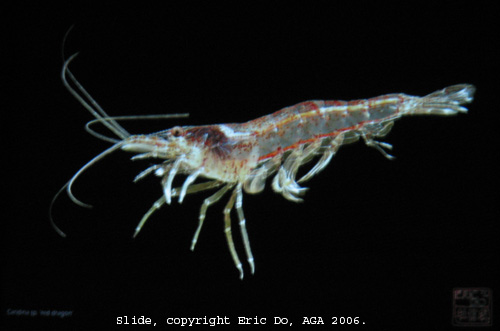 expensive shrimp are graded, using crystal reds as an example. Basically, the width and number of white bands on a crystal red define how “good” of a shrimp it is. He mentioned how folks in Asia are trying to selectively breed a crystal red shrimp that is entirely white, with all the white bands merging together.
expensive shrimp are graded, using crystal reds as an example. Basically, the width and number of white bands on a crystal red define how “good” of a shrimp it is. He mentioned how folks in Asia are trying to selectively breed a crystal red shrimp that is entirely white, with all the white bands merging together. The second, and last, presentation for the evening was about Aquarium Photography by Jeff Senske of Aquarium Design Group, in Houston, Texas. Jeff is well-known in the aquarium community, and on the online forums, for pictures of his tanks. He wanted to briefly share a few of his tips and tricks to successfully shooting an aquarium. A few tips:
The second, and last, presentation for the evening was about Aquarium Photography by Jeff Senske of Aquarium Design Group, in Houston, Texas. Jeff is well-known in the aquarium community, and on the online forums, for pictures of his tanks. He wanted to briefly share a few of his tips and tricks to successfully shooting an aquarium. A few tips: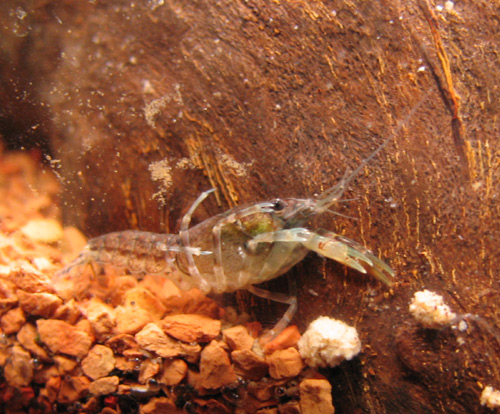

 Today was the second day of the 2006 Catfish Convention. I was able to attend most of the sessions today, and I must say that all were of very high quality. Tomorrow, the convention will wrap up with an all-day auction.
Today was the second day of the 2006 Catfish Convention. I was able to attend most of the sessions today, and I must say that all were of very high quality. Tomorrow, the convention will wrap up with an all-day auction.
 This room have about 200 tanks in it, stocked full of conference attendee’s best fish from their fishrooms. There were more than just catfish represented in this rooms; there were: catfish, killies, bettas, cichlids, livebearers, danios, pretty much any class of fish you can think of.
This room have about 200 tanks in it, stocked full of conference attendee’s best fish from their fishrooms. There were more than just catfish represented in this rooms; there were: catfish, killies, bettas, cichlids, livebearers, danios, pretty much any class of fish you can think of.
 The last session I attended today was by Dr. Peter Unmack about Austrailian catfishes. I think that Dr. Unmack might have had the most interesting talk of the day, largely because it featured catfish that I had never seen before.
The last session I attended today was by Dr. Peter Unmack about Austrailian catfishes. I think that Dr. Unmack might have had the most interesting talk of the day, largely because it featured catfish that I had never seen before.


